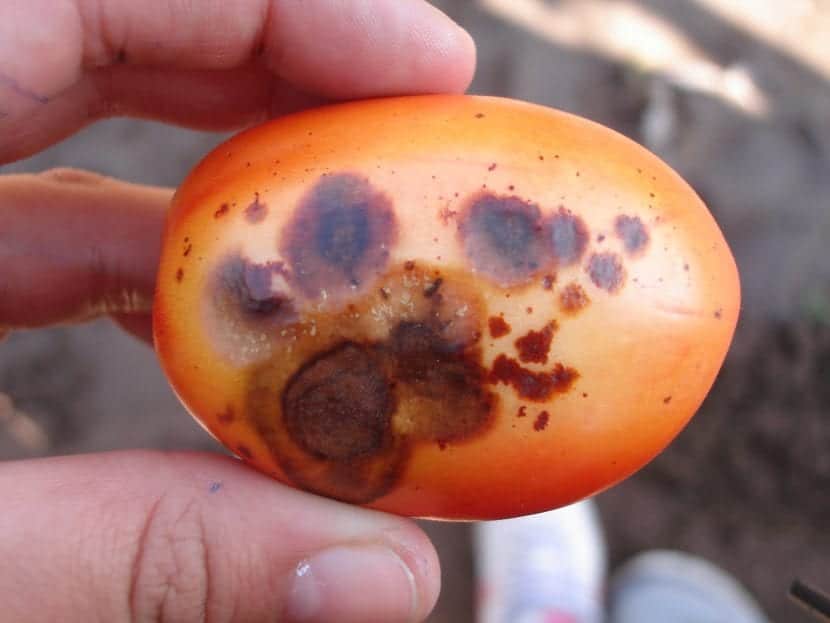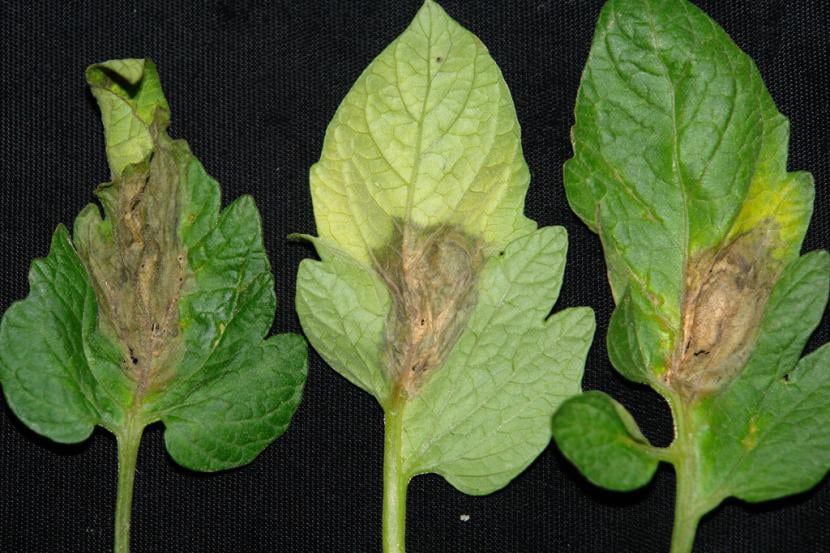
The persimmon or kaki, whose scientific name is Khaki Diospyros, is a fruit tree native to Southeast Asia that produces delicious fruits. In addition, it is very decorative, since its normally green leaves turn a beautiful orange-red color during the fall before the wind blows them away. For all this, it is one of the most cultivated species in temperate regions.
However, there are several pests and diseases of persimmon that can seriously harm you. So if you suspect something is wrong with your tree, find out below what it may have and how to fix it.
Pests
Fruitfly
The fruit fly, whose scientific name is Ceratitis capitata, it is a flying insect that, as its name suggests, feeds on the fruits of the trees. But not only that, but it also leaves its larvae inside the persimmon, causing it to rot quickly.
To do? Very easy: place several yellow sticky traps near the tree. Thus, once they are attached to them, they will not be able to do anything. Another option is to cut a plastic bottle in half, add sugar or honey and water, and attach a rope to the tree.
Persimmon Sesia

The persimmon sesia, whose scientific name is Synanthedon tipuliformis, is a type of moth whose larvae excavate galleries in the stems. By doing so, they cause significant damage to them.
To do? The most recommended is cut the infected parts with a previously disinfected hand saw with pharmacy alcohol and seal the wound with healing paste. In addition, it is advisable to treat the tree with phosphorous insecticides.
San Jose louse

Image - http://gipcitricos.ivia.es
The San José louse, whose scientific name is Quadraspidiotus perniciosusThey are very small parasites that attach to the plant protected by a brown shell to feed on the sap. A) Yes, they cause damage to the leaves, which turn yellow and fall, and to the fruits, which end with spots without color.
To do? Since kaki is a tree whose fruits are edible, ecological insecticides should be usedand neem oil.
Elongated mealybug

The elongated mealybug, whose scientific name is Eulecanium persicae, is a parasite that it is deposited mainly on the leaves and tender stems. It is protected by a brown or reddish shield and measures only 1 centimeter.
To do? If they are few or the tree is young, can be removed with a brush dipped in pharmacy rubbing alcohol; in case there are many or the plant is adult or very large, it is best to treat it with pyrethrins.
Birds

Birds are very pretty animals, but the most tender shoots and fruits can be eaten, especially if they are blackbirds or starlings. To avoid this, it is important to use protection nets or scarecrows.
Wasps

Wasps are opportunistic insects, since they feed on fruits that have already been attacked by birds. For this reason, it is necessary to cover the fruits or make wasp traps.
Management
Anthracnose

Image - Desafio1710.blogspot.com
Anthracnose, known as canker or chancre, is a disease caused by a fungus that can be of the genus Colletotrichum, Gloesporium or the species Coniothyrium fuckelli. Produce discolored spots on leaves, stems, fruits, or flowers.
To do? The most advisable thing is cut the affected parts and burn them, and treat with fungicides.
Botrytis

Botrytis is a fungal disease transmitted by the fungus Botrytis cinerea. Produces brown spots on leaves and flowers, usually due to lack of aeration.
To do? They must be remove affected parts, treat with fungicide and avoid wetting the leaves and flowers when watering.
Cephalosporium diospyri

Image - Treebuzz.com
It is a fungal disease that produces drought and leaf fall. The branches weaken and the crown becomes bare. Affected specimens die after two years.
To do? It's very important acquire healthy trees, and take care of them properly so they are strong.
Do you already know what happens to your kaki? I hope so and you can get it back soon 🙂.

My czki tree was doing very well, the flowers came out in September, then the buttons formed for the fruit that soon turned brown and fell, that is, I will no longer have fruits, what happened to it. If you can answer me sonicastrillo@gmail.com
Thank you
Hello Sonia.
Is it possible that watering was stopped at some point?
Another possible reason is a lack of compost. In spring it would be a good idea to start fertilizing it with compost or cow manure for example.
Greetings.